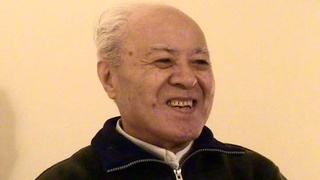Interviews
Volunteering to serve for the U.S. military in Japan
Well I had good grades and Japanese was easy because that time I could memorize. Japanese language is memory, that’s all. You memorize words and characters so it was very easy for me. I taught Japanese until the end of the war. The war ended in forty-five, and I was hoping to get back to school. But I wanted to visit my relatives in Japan having heard from my mother about them all the years I was in Kona. So I decided to volunteer to serve in Japan, and the requirement for us was to be commissioned as Second Lieutenant to go over to Japan. To become an officer, I had to go through basic training for three months in Fort McClellan, Alabama. And after that I was commissioned and went to Japan in 1946.
Date: May 29, 2006
Location: Hawai`i, US
Interviewer: Akemi Kikumura Yano
Contributed by: Watase Media Arts Center, Japanese American National Museum
Explore More Videos

Learning English upon discovering that family could not return to Peru
(1930-2018) Nisei born in Peru. Taken to the United States during WWII.

Dealing with racism within army unit in Korea
(b. 1939) Japanese American painter, printmaker & professor

Her early life in Canada
(b.1912) Japanese Canadian Issei. Immigrated with husband to Canada in 1931

Japanese school
(b.1924) Japanese Canadian Nisei. Interpreter for British Army in Japan after WWII. Active in Japanese Canadian community

Learning Japanese at school and at home with family
(b.1951) Co-founder and managing director of San Jose Taiko.

To think in one language and live in another (Spanish)
Sansei Argentinean

Initial struggles with the language barrier (Japanese)
(b. 1917) Okinawan, Issei Argentinean



Appearance vs. Combat Effectiveness
(1919 - 2006) World War II and Korean War veteran





General Ryder’s faith in the 100th infantry battalion
(1919 - 2006) World War II and Korean War veteran
